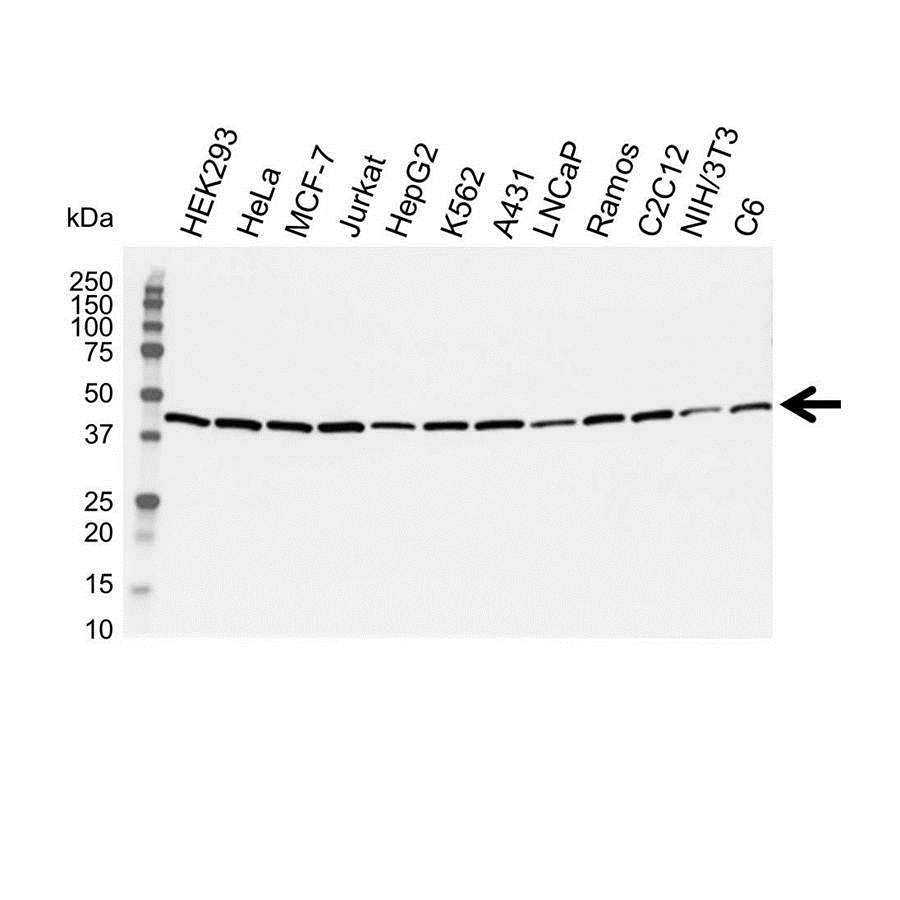

The beta isoform of actin, along with gamma actin, coexist in most cell types as components of the cyto-skeleton. There are six different actin isoforms in human. Beta actin is a non-muscle cytoskeletal protein in all human cell types and is involved in cell motility, structure, and integrity. Ethanol, B5, methacarn, or Bouin's solutions may also be used as fixatives.īeta actin is one of six actin isoforms which have been identified.

The epitope recognized by the antibody is resistant to formalin-fixation and paraffin-embedding. The antibody specifically recognizes beta-actin in a wide variety of tissues and species using immunoblotting, immunofluorescent staining of cultured cell lines, and immunohistochemistry. Use Anti-beta-actin for detection of beta-actin by ELISA, immunohistology, western blotting, and immunofluorescence.

The antibody reacts with beta-actin expressing cells in human, bovine, sheep, pig, rabbit, cat, dog, mouse, rat, guinea pig, chicken, carp, leech and fruit fly tissues, but not in amoeba. The anti-beta-actin monoclonal antibody can be used to analyze beta-actin protein expression in experimental cells by immunofluorescence and western blot and has been specifically used in combination with beta-actin siRNA control to study the specificity and effectiveness of the RNA Interference (RNAi) effect at the protein level. Loss of signal upon CRISPR mediated knockout (KO) using the LentiArray™ CRISPR product line confirms that antibody is specific to ACTB. Chemiluminescent detection was performed usingSuperSignal™ West Dura Extended Duration Substrate (Product # 34076). The blot was probed with beta Actin Monoclonal Antibody (AC-15) (Product # AM4302, 1:1000 dilution) and Goat anti-Mouse IgG (H+L) Superclonal™ Recombinant Secondary Antibody, HRP (Product # A28177, 1:10,000 dilution) using the iBright™ FL1500 (Product # A44115). Resolved proteins were then transferred onto a nitrocellulose membrane (Product # IB23001) by iBlot® 2 Dry Blotting System (Product # IB21001). The samples were electrophoresed using NuPAGE™ Novex™ 4-12% Bis-Tris Protein Gel (Product # NP0322BOX). Western blot analysis of ACTB was performed by loading 30 µg of A-375 wild type (Lane 1), A-375 Cas9 (Lane 2), A-375 ACTB KO (Lane 3) whole cell extracts. Knockout of ACTB was achieved by CRISPR-Cas9 genome editing using LentiArray™ Lentiviral sgRNA (Product # A32042, Assay ID CRISPR889078_LV ) and LentiArray Cas9 Lentivirus (Product # A32064).


 0 kommentar(er)
0 kommentar(er)
